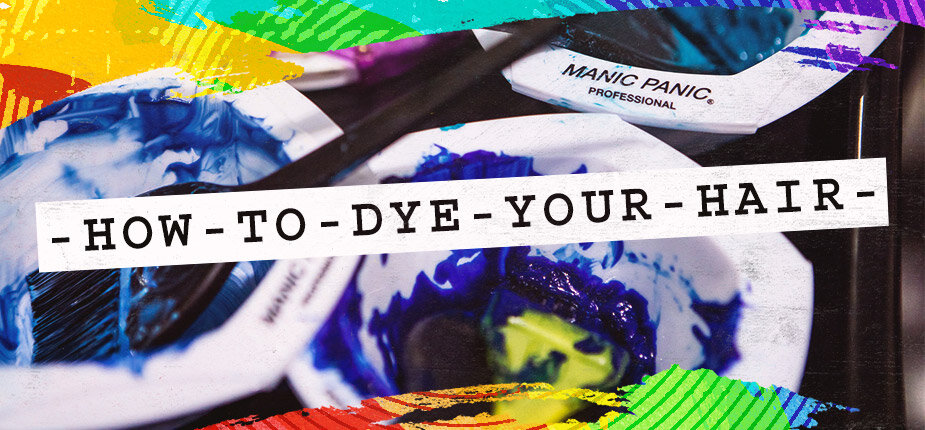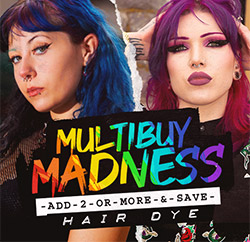Êtes-vous sûr de vouloir effectuer cette action ?

Sections
Derniers articles

Comment teindre vos cheveux
Envie de vous teindre les cheveux à la maison ? Apprendre à teindre ses cheveux soi-même de manière sûre et efficace permet certes de faire des économies, mais il est important de suivre attentivement chaque étape et d'être patient.
Si la coloration est souvent réalisée en salon, c'est pour une bonne raison. Grâce aux colorations semi-permanentes et temporaires faciles à utiliser disponibles sur le marché, il est de plus en plus courant de se teindre les cheveux à la maison. Ce guide aborde toutes les étapes de base de la coloration à domicile, du test cutané à l'application de la teinture. Pour plus d'informations sur certaines étapes, consultez nos guides sur les colorations.
Comment se teindre les cheveux à la maison ?
Assurez-vous d'avoir suffisamment de teinture pour la longueur de vos cheveux.
Aménagez votre salon de coloration à domicile avec tout le nécessaire avant de commencer.
Préparez vos cheveux en suivant les instructions de votre teinture.
Effectuez un test sur une petite zone et une mèche pour vérifier les allergies et le résultat de la couleur.
Appliquez la teinture sur les pointes.
Incorporez la teinture aux racines.
Peignez vos cheveux pour une couverture complète.
Laissez poser.
Rincez la teinture comme indiqué, en veillant à ne pas en mettre sur votre peau.
Comment appliquer sa coloration soi-même ?
Pour appliquer sa coloration soi-même, munissez-vous d'un pinceau et d'un bol à teinture afin de minimiser les dégâts et de faciliter l'application. Certaines personnes utilisent un miroir pour appliquer la teinture à l'arrière de la tête. Cela permet de mieux voir où l'on pose le pinceau et de vérifier la couverture complète. Peigner ses cheveux après l'application permet également d'obtenir une couverture maximale.
Comment se teindre les cheveux
Pour obtenir la nuance la plus proche de celle du pot, nous vous recommandons de pré-éclaircir vos cheveux si votre couleur naturelle est brune, noire ou rousse. Les blonds naturels auront un résultat plus fidèle grâce à leur couleur de base plus claire. Si vous avez les cheveux foncés et ne souhaitez pas les décolorer, nous vous conseillons d'opter pour des couleurs plus foncées et plus pigmentées, comme le rouge, le violet ou le vert, pour une couleur plus intense et plus foncée.
Il est conseillé de toujours effectuer un essai sur une mèche quelques jours avant de vous teindre les cheveux afin de détecter d'éventuelles allergies, de déterminer le temps de pose et d'observer le rendu final.
La coloration peut tacher temporairement la peau et les tissus (serviettes, linge de lit, vêtements, etc.) de manière permanente. Nous vous recommandons donc d'utiliser de vieux tissus pendant la teinture.
N'utilisez pas de produits capillaires alcalins sur cheveux teints, car ils peuvent altérer le pH nécessaire à une absorption et une tenue optimales de la couleur. Les produits sans alcool ou au pH légèrement acide vous aideront à conserver votre couleur plus longtemps.
Remarque :
Manic Panic et de nombreux autres types de colorations capillaires temporaires ne conviennent pas aux sourcils ou aux cils. En cas de contact avec les yeux, rincez la zone affectée et consultez un médecin.
Pour des résultats optimaux et éclatants, utilisez la coloration sur cheveux pré-éclaircis. Les résultats peuvent varier lorsque la coloration est appliquée sur des cheveux plus foncés et non traités.
La couleur obtenue varie en fonction de la porosité, de la texture de vos cheveux, de votre couleur de base et du temps de pose de la couleur.
Guide pour se teindre les cheveux à la maison
Étape 1 : Test cutané
Avant d'appliquer une coloration (même si vous en avez déjà utilisé), effectuez un test cutané. Il est essentiel de détecter d'éventuelles réactions allergiques. Effectuez toujours un test cutané 48 à 24 heures avant utilisation, en suivant les instructions figurant sur l'emballage.
Choisissez une petite zone de peau de la taille d'une pièce de monnaie pour le test, de préférence discrète, comme derrière l'oreille ou dans le creux du coude.
Lavez la zone à tester à l'eau et au savon, puis séchez-la en tamponnant avec une serviette propre.
Appliquez une fine couche de la coloration capillaire de votre choix sur la zone à tester.
Laissez sécher la coloration et laissez-la à découvert pendant 24 heures.
Inspectez la zone à tester pour détecter tout signe d'irritation. En cas de réaction, le produit ne doit en aucun cas être utilisé.
Pour plus d'informations sur les tests épicutanés et les allergies, consultez notre article complet ici.
Étape 2 : Test sur mèche
Ensuite, effectuez un test sur mèche pour vous assurer d'obtenir la couleur souhaitée. Appliquez une petite quantité de coloration sur une mèche discrète (par exemple, une mèche inférieure à l'arrière de la tête) avant d'appliquer la couleur sur l'ensemble de la chevelure.
Étape 3 : Pré-éclaircissement
Pour que votre couleur soit aussi éclatante qu'elle apparaît dans le pot ou sur le nuancier, il est nécessaire de pré-éclaircir vos cheveux. Si vous optez pour des teintes claires ou pastel, c'est essentiel. Comme pour la coloration, effectuez un test sur une petite zone et une mèche avec votre décolorant ou tonique. Une fois la décoloration appliquée, suivez simplement les instructions sur l'emballage et veillez à bien laver et rincer tous les résidus de décolorant avec du shampoing, car cela pourrait empêcher la coloration de prendre correctement.
Étape 4 : Shampoing
Assurez-vous que vos cheveux sont prêts à être teints en utilisant un shampoing nettoyant en profondeur. Privilégiez un shampoing spécialement conçu pour être utilisé avant la coloration, car cela évitera d'ajouter des produits chimiques susceptibles d'altérer la coloration. N'utilisez pas d'après-shampoing, car cela empêcherait la coloration de pénétrer dans les cheveux.
Étape 5 : Préparez votre salon
Pour vous teindre les cheveux à la maison, l'une des étapes clés est de préparer tout le nécessaire avant de commencer. Cela vous évitera de courir partout. Portez des gants de protection lorsque vous appliquez une coloration, y compris un décolorant. Cela vous permettra de protéger votre peau et d'éviter de vous tacher les mains. Pour un résultat impeccable, appliquez du lait pour bébé ou de la vaseline à la naissance des cheveux et sur les oreilles.
Vaut-il mieux se teindre les cheveux mouillés ou secs ?
Lisez attentivement les instructions de votre coloration pour savoir si vous devez l'appliquer sur cheveux mouillés ou secs. Les colorations semi-permanentes s'appliquent sur cheveux mouillés, essorés ou secs.
Mouillé :
Crazy Color
Séchage à la serviette :
La Riche Instructions
Stargazer
Sec :
Manic Panic
Il existe de nombreuses façons de se teindre les cheveux, selon la marque de coloration utilisée. Assurez-vous de bien vous renseigner sur la coloration qui vous offre les résultats souhaités : durée, composition chimique et type de cheveux. Dans cet exemple, nous avons utilisé la coloration Manic Panic, à appliquer sur cheveux secs.
Versez la quantité nécessaire de coloration dans un bol en plastique (environ la moitié d'un pot pour cheveux courts, un pot entier pour cheveux longs. Si vous avez les cheveux épais ou particulièrement poreux, nous vous conseillons de prendre un pot supplémentaire au cas où vous auriez besoin de plus de produit en cours de coloration).
À l'aide d'un pinceau à coloration, appliquez la coloration en commençant à environ 1,2 cm du cuir chevelu et en répartissant uniformément jusqu'aux pointes. Ensuite, de la nuque, à la naissance des cheveux, remontez vers le haut de la chevelure. Assurez-vous que toute la chevelure soit saturée de couleur.
Une fois que les cheveux moussent, cela indique que la coloration a été bien absorbée. Les nuances plus claires de Manic Panic Color peuvent nécessiter un peignage supplémentaire pour obtenir une saturation maximale et une couleur plus longue durée.
Laissez poser la coloration au moins 30 minutes, voire plus. À température ambiante, la coloration Manic Panic prend en moyenne 30 minutes. Les lampes infrarouges peuvent réduire le temps de pose de 5 à 7 minutes et favoriser une coloration plus intense. Pour les cheveux résistants, il est conseillé de couvrir les cheveux avec un bonnet en plastique et de laisser poser une heure ou plus.
Rincez les cheveux à l'eau froide, loin du visage. Aucun traitement ultérieur n'est nécessaire avec les colorations Manic Panic.
Maintenant que vous savez comment vous teindre les cheveux, consultez nos guides de coloration pour découvrir comment réaliser des coiffures spécifiques, comme le dip dye et le rainbow hair.
Remarque : les informations sur la coloration Blue Banana doivent être lues en complément des conseils d'un professionnel. Blue Banana ne garantit pas la validité de la coloration et les instructions complémentaires doivent être obtenues auprès de personnes qualifiées.







